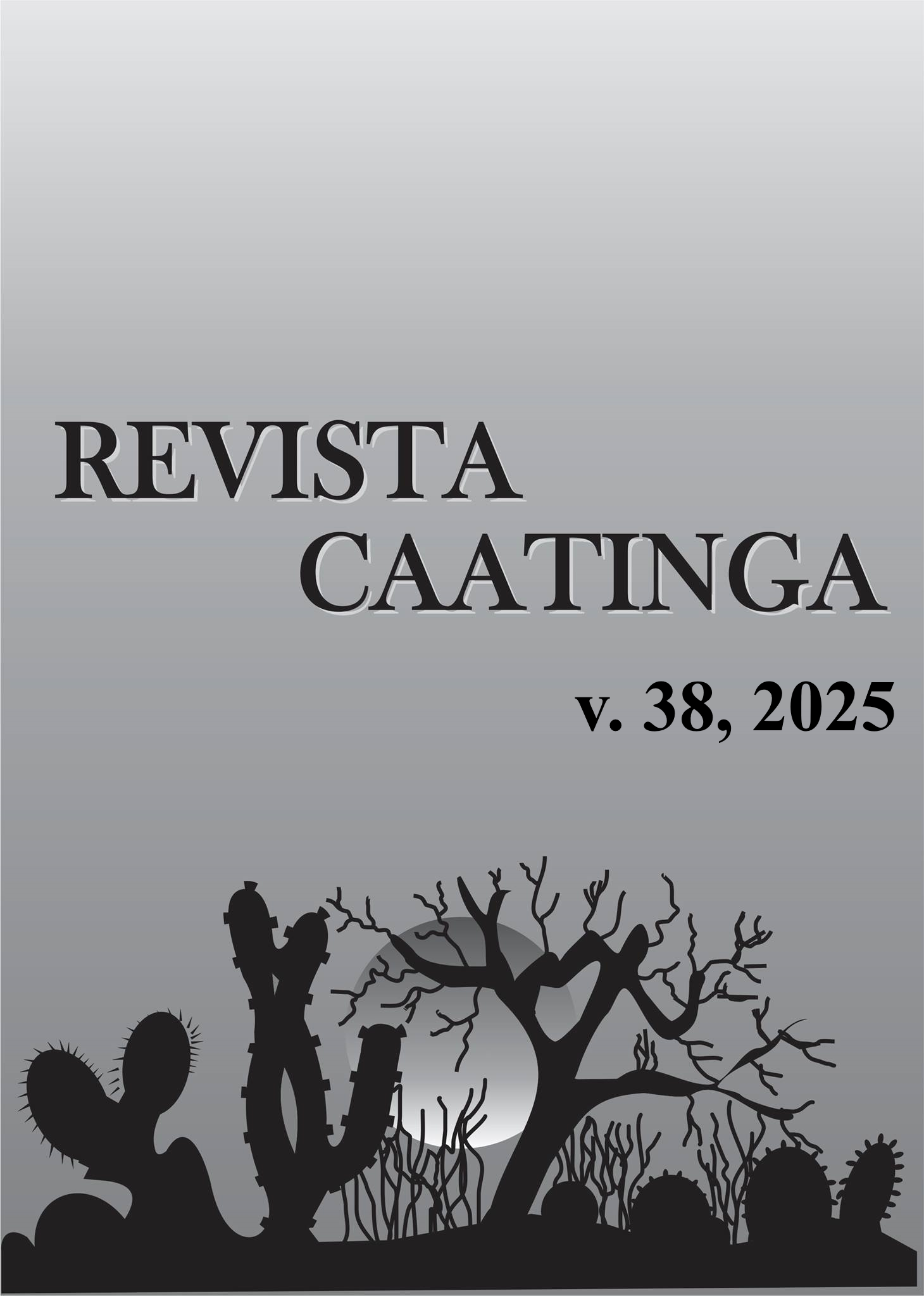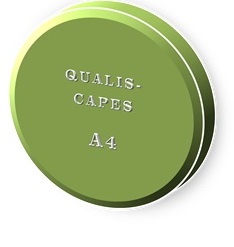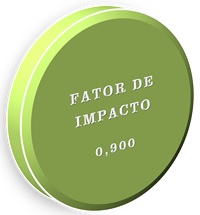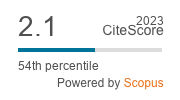Effect of shading on the dynamics and weed interference in organic arugula crop
DOI:
https://doi.org/10.1590/1983-21252025v3812666rcKeywords:
Eruca sativa Mill. Protected environment. Competition.Abstract
The use of screened structures is an alternative for reducing light, creating an ideal microclimate for vegetable development. In this sense, the objective of this research was to evaluate the effect of shading caused by the protected environment on the dynamics and period of weed control in organic arugula crops. Two experiments were carried out using a randomized block design with three replications in a split-plot scheme. The first experiment was conducted under full light conditions, and the second experiment was conducted in a shaded environment with a 35% reduction in light. The Digitaria horizontalis Willd and Amaranthus spinosus L. having the highest density in the uncovered system and the protected environment, respectively. The lack of weed control reduced arugula productivity by 52 and 80% in systems with and without a protected environment, respectively. The critical interference prevention period (CIPP) for arugula in an uncovered environment was 8–29 and 8–26 days after transplant (DAT), considering an acceptable production reduction of 2.5 and 5%, respectively. The protected environment reduced the CIPP of arugula to 20–39 and 20–31 DAT for acceptable production reductions of 2.5 and 5%, respectively. The use of the protected environment changed the dynamics of the species and reduced the period of weed control in organic arugula by 3 and 8 days, considering an acceptable production reduction of 2.5 and 5%, respectively.
Downloads
References
ALRUWAIH, N. A.; YAYLAYAN, V. A. Comparative evaluation of bioactive compounds in lyophilized and tray-dried rocket (Eruca sativa). Journal of Food Processing and Preservation, 41: 1-8, 2017.
AMEENA, M. et al. Weed ecology: Insights for successful management strategies: A review. Agricultural Reviews, 2024.
BELL, L. et al. Analysis of seven salad rocket (Eruca sativa) accessions: The relationships between sensory attributes and volatile and non-volatile compounds. Food Chemistry, 218: 181-191, 2017.
BELL, L. et al. Use of TD-GC–TOF-MS to assess volatile composition during post-harvest storage in seven accessions of rocket salad (Eruca sativa). Food Chemistry, 194: 626-636, 2016.
BELLASIO, C.; GRIFFITHS, H. Acclimation to low light by C4 maize: implications for bundle sheath leakiness. Plant, Cell and Environment, 37: 1046-1058, 2014.
BESSETTE, D.; ZWICKLE, S.; WILSON, R. In the weeds: distinguishing organic farmers who want information about ecological weed management from those who need it. Renewable Agriculture and Food Systems, p. 1-12, 2018.
CARMO FILHO, F.; ESPÍNOLA SOBRINHO, J.; MAIA NETO, J. M. Dados climatológicos de Mossoró: um município do semi-árido nordestino. Mossoró, RN: ESAM, 1991. 121 p. (Coleção Mossoroense, 30).
CHUN, J. H. et al. Combined effect of Nitrogen, Phosphorus and Potassium fertilizers on the contents of glucosinolates in rocket salad (Eruca sativa Mill.). Saudi Journal of Biological Sciences, 24: 436-443, 2017.
DARYANTO, S.; WANG, L.; JACINTHE, P. A. Impacts of no-tillage management on nitrate loss from corn, soybean and wheat cultivation: A meta-analysis. Scientific Reports, 7: 12117, 2017.
FREITAS, M. A. M. et al. Water deficit on growth and physiological indicators of Bidens pilosa L. and Bidens subalternans DC. Revista Caatinga, 34: 388-397, 2021.
FREITAS SOUZA, M. et al. Can irrigation systems alter the critical period for weed control in onion cropping? Crop Protection, 147: 105457, 2021.
JHA, P. et al. Weed management using crop competition in the United States: A review. Crop Protection, 95: 31-37, 2017.
KNEZEVIC, S. Z.; DATTA, A. The Critical Period for Weed Control: Revisiting Data Analysis. Weed Science, 63: 188-202, 2015.
LINS, H. A. et al. Weed interference periods in sesame crop. Ciência e Agrotecnologia, 43: 1-10, 2019.
LINS, H. A. et al. Economic evaluation and effectiveness of herbicides applied in pre-emergency in the sesame. Revista Caatinga, 34: 621-630, 2021.
MARTÍNEZ-VILALTA, J. et al. A new look at water transport regulation in plants. New Phytologist, 204: 105-115, 2014.
MONTEIRO, A. L. et al. A new alternative to determine weed control in agricultural systems based on artificial neural networks (ANNs). Field Crops Research, 263: 1-12, 2021.
NATHALIE, C. et al. The response of weed and crop species to shading. How to predict their morphology and plasticity from species traits and ecological indexes?. European Journal of Agronomy, 121: 126158, 2020.
NTALLI, N. et al. Greenhouse biofumigation with Melia azedarach controls Meloidogyne spp. and enhances soil biological activity. Journal of Pest Science, 91: 29-40, 2018.
PARRY, S.; SHRESTHA, A. Effects of Weed-Free Periods on Organic Romaine Lettuce Production. Journal of Crop Improvement, 32: 124-139, 2018.
RAHIMI, V. et al. Well-to-wheel life cycle assessment of Eruca Sativa-based biorefinery. Renewable Energy, 117: 135-149, 2018.
RAIMONDI, M. A. et al. Periods of weeds interference in cotton yield in the seeding densified" Off Season". Planta Daninha, 32: 521-532, 2014.
REGINALDO, L. T. R. T. et al. Weed interference in carrot yield in two localized irrigation systems. Revista Caatinga, 34: 119-131, 2021.
SÁNCHEZ-DEL PINO, I.; MOTLEY, T. J.; BORSCH, T. Molecular phylogenetics of Alternanthera (Gomphrenoideae, Amaranthaceae): resolving a complex taxonomic history caused by different interpretations of morphological characters in a lineage with C4 and C3–C4 intermediate species. Botanical Journal of the Linnean Society, 169: 493-517, 2012.
SINCLAIR, T. R. et al. Limited-transpiration response to high vapor pressure deficit in crop species. Plant Science, 260: 109-118, 2017.
STEINDAL, A. L. H. et al. Effects of photoperiod, growth temperature and cold acclimatisation on glucosinolates, sugars and fatty acids in kale. Food Chemistry, 174: 44-51, 2015.
TAIZ, L.; ZEIGER, E. Fisiologia Vegetal. 5. ed. Porto Alegre, RS: Artmed, 2013. 954 p.
TSUTSUMI, N. et al. Variations in structural, biochemical, and physiological traits of photosynthesis and resource use efficiency in Amaranthus species (NAD-ME-type C4). Plant Production Science, 20: 300-312, 2017.
WILLER, H.; TRÁVNÍČEK, J.; SCHLATTER, B. The World of Organic Agriculture: Statistics and Emerging Trends 2024. 25. ed. FiBL; IFOAM – Organics International, 2024. Available at: https://orgprints.org/id/eprint/52272/. Access on: Oct. 31, 2024.
Downloads
Published
Issue
Section
License
Os Autores que publicam na Revista Caatinga concordam com os seguintes termos:
a) Os Autores mantêm os direitos autorais e concedem à revista o direito de primeira publicação, com o trabalho simultaneamente licenciado sob a Licença Creative Commons do tipo atribuição CC-BY, para todo o conteúdo do periódico, exceto onde estiver identificado, que permite o compartilhamento do trabalho com reconhecimento da autoria e publicação inicial nesta revista, sem fins comerciais.
b) Os Autores têm autorização para distribuição não-exclusiva da versão do trabalho publicada nesta revista (ex.: publicar em repositório institucional ou como capítulo de livro), com reconhecimento de autoria e publicação inicial nesta revista.
c) Os Autores têm permissão e são estimulados a publicar e distribuir seu trabalho online (ex.: em repositórios institucionais ou na sua página pessoal) a qualquer ponto antes ou durante o processo editorial, já que isso pode gerar alterações produtivas, bem como aumentar o impacto e a citação do trabalho publicado (Veja O Efeito do Acesso Livre).







